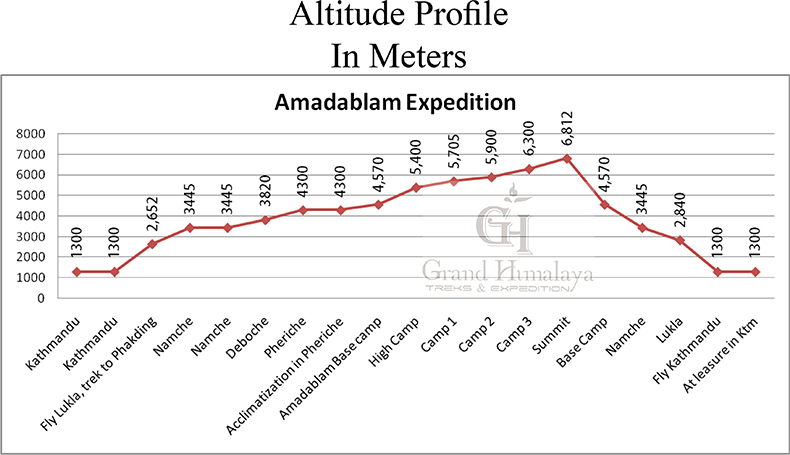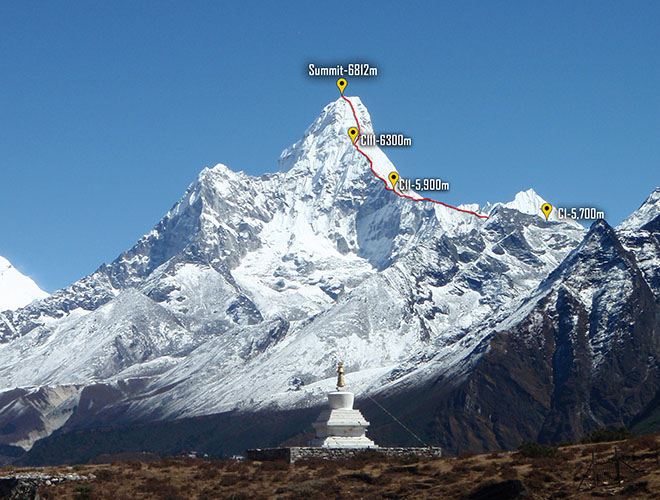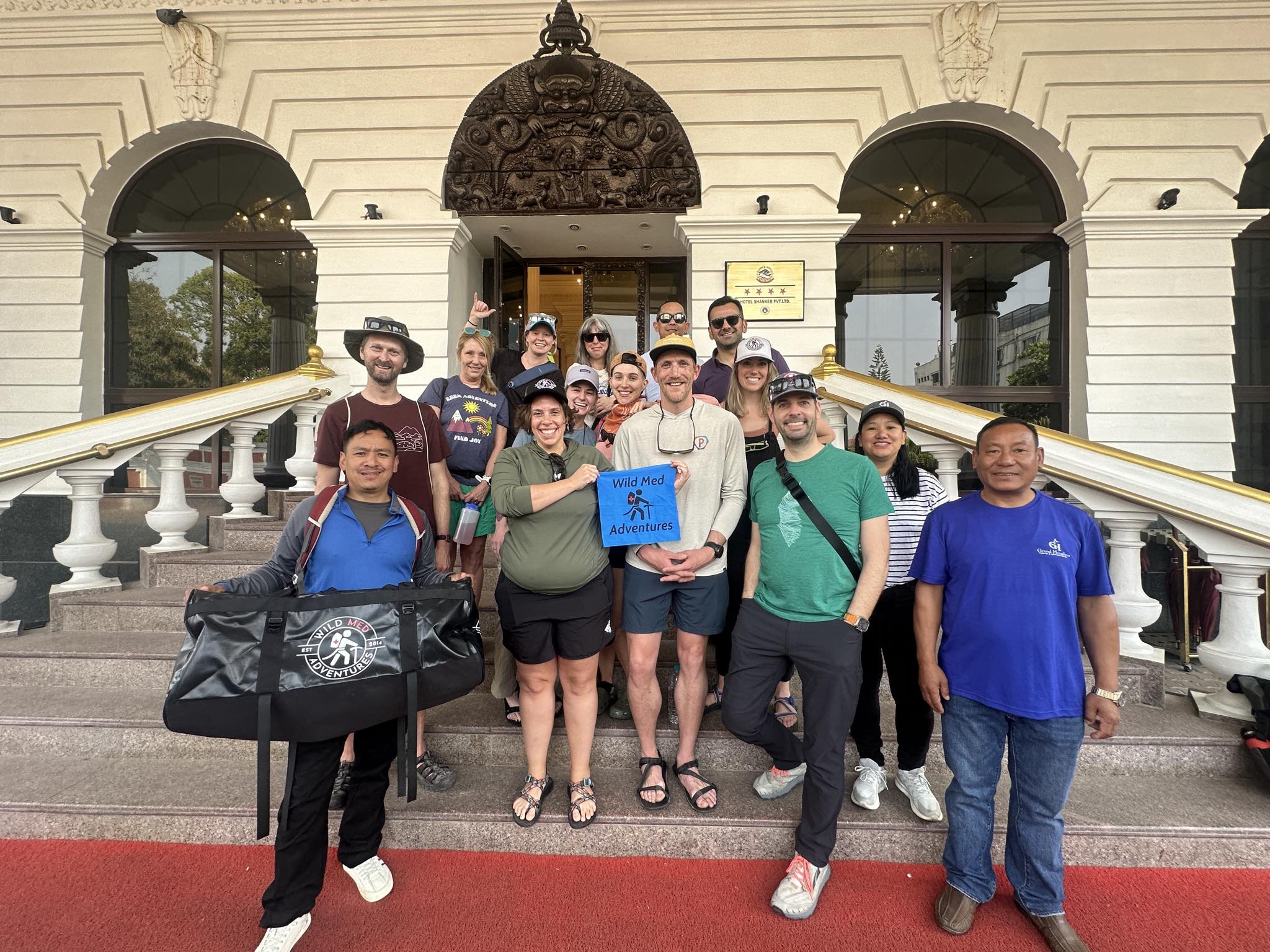

Ama Dablam is a mountain in the Himalaya range of eastern Nepal. The main peak is 6,812 meters (22,349 ft), the lower western peak is 5,563 meters (18,251ft). Ama Dablam means "Mother's necklace"; the long ridges on each side like the arms of a mother (ama) protecting her child, and the hanging glacier thought of as the dablam, the traditional double-pendant containing pictures of the gods, worn by Sherpa women.It is one of the most stunning peaks in the Himalaya and one of the most impressive mountains in the world. Situated in the heart of Everest's Khumbu region, it lies directly above Tyangboche Monastery on the well-worn path to Everest Base Camp and is admired by thousands of trekkers and climbers every year. This expedition offers a superb, technical climbing experience in a magnificent setting, with numerous cultural and scenic diversions. The expedition is not a "guided" ascent. It will be a professionally led team of competent mountaineers who have enough experience to climb one of the worlds's most sought after mountains without undue risk. This approach ensures that team members are suitably experienced, reasonably self-sufficient and capable and willing to move between camps unsupervised. You will still have a high level of support, starting with strong, confident leadership; this will maximize your chances of success without undermining the quality of your achievement. If you have the necessary experience and wish to participate fully as a team member of an expertly led expedition to one of the world's most impressive mountains, this could be the trip for you!
The Mountain
Like the Matterhorn in the Swiss Alps, Ama Dablam epitomizes all that is grand about the mountains. Its striking features have become a familiar figure to the public through its adoption as the logo of 'Perpetual', an international assurance company, and numerous posters and books throughout the world. Such impressive beauty has made Ama Dablam a highly coveted prize for climbers. Since its first ascent in 1961 by an Anglo-American-New Zealand team, it has been climbed frequently and by many different routes. As you might expect for such a mountain, some of these routes are of the highest order of difficulty. Our route will be by the original line of ascent, the South West Ridge. This gives a fine and varied climb, sustained at a reasonable level of difficulty and with good camp platforms at strategic points. The climbing provides interest on rock, snow and ice and although of a fairly technical nature, in normal conditions it is never very difficult. Apart from one short section, the climb is objectively very safe. A route description is included in the detailed itinerary.
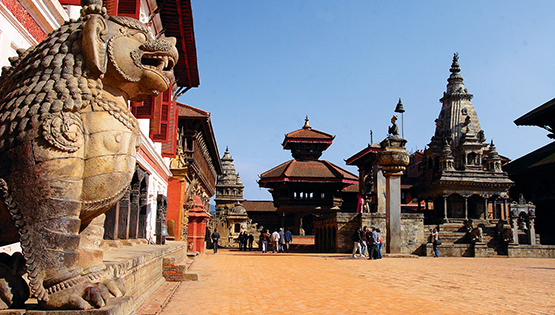
A very warm welcome to the Kingdom of Himalayas. Upon your arrival at the Tribhuvan international airport our representative welcomes you and assists you transfer in your hotel in Kathmandu. After time to get refreshed, evening you'll meet and transfer for welcome dinner in one of the typical Nepalese restaurant in the heart of Kathmandu i.e. Utsav or Nepali Chula (Kitchen). Here you will not simply experience the traditional Nepalese dish but will be entertained with Nepalese traditional dance and folk songs. After the dinner, you will be transferred back to your respective hotel.
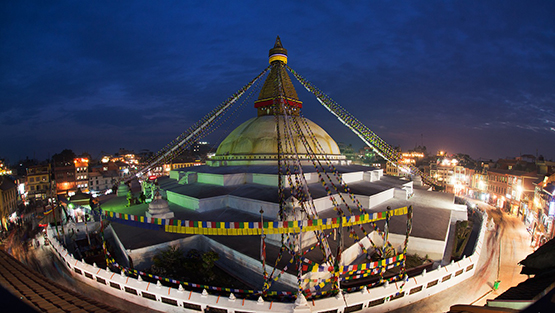
Kathmandu is the historical and cultural heart of Nepal and has been a popular destination for tourists ever since Nepal opened its doors to visitors. The city presents a wonderful mix of Hinduism, Tibetan Buddhism and Western influence in the Valley. Bauddhanath: Stupa with its 130 ft. dome. One of the world's largest Stupa, Bouddha is generally acknowledged to be the most important Tibetan Buddhist monument outside Tibet. Pupshupatinath Temple: Pashupatinath is considered one of the holiest shrines of all the Hindu temples. The temple has remained the presiding deity of ruling Nepalese Royalty. -After the city tour, our leader or guide will do the final briefing of the expedition. They will also take the opportunity to check the members' personal equipment as the city bazaars and climbing shops will provide the last chance to correct any deficiencies. Overnight at Hotel.
We will make an early morning start for the sixteen-seater Twin Otter flight to Lukla (2,840m/9,317ft), the threshold to the land of legendary Sherpas and the highest mountain on earth, Mt. Everest. This is an exciting flight, which should give a glimpse of Everest in the distance (remember to sit on the left hand side of the plane!). The landing on the tiny airstrip at Lukla is, to put it mildly, exciting. In Lukla, we'll meet our trek staffs and porters, and after a short break at Lukla we'll set off for our first night's stop at Phakding (2,652 m/8,698 ft). Situated on the banks of the Dudh Kosi, which drains the whole of the Khumbu Region, this small hamlet is on the main trade route through the area and there are a number of clean, well-built lodges where we can spend the night.
Setting off early in the morning, we follow the river before climbing the steep hill to Namche Bazaar. Hopefully, we get our first views of Everest and Lhotse as we approach Namche. We reach the town after about six hours' walking. Namche is the most prosperous and largest settlement in the Khumbu. It is the capital of the Sherpa population, a people who closely resemble the Tibetans in looks and culture. Namche is a vibrant town with many shops and several restaurants and lodges. Superb mountain scenery makes an impressive back-drop. We are likely to feel breathless from the altitude, as Namche is 11,300 ft (3,445 m) above sea level. To assist acclimatization we spend two nights here.
Namche Bazzar is the highlight of EBC trek and the heart of the Everest (Khumbu) region which has government offices, ATMs, Internet cafes, shops, restaurants, a bakery and a colourful market each Friday evening and Saturday. This is first scheduled 'acclimatization' day for this trek. Health experts always recommend us to stay active and moving during the rest day too instead of being idle. If we trek few hundred meters vertical during the day, it will help us to acclimatize with the alien heights that we are going to confront on the trek. Having been born, guiding and leading trips in the Himalayas, we believe in the natural process of acclimatization, "Climb high, sleep low". We take an interesting side trip up to Khumjung and climb up to famous airstrip at Syangboche. Just above the airstrip is the Everest View Hotel (3800m), a Japanese scheme to build a deluxe hotel with great views of the highest mountains on Earth. The Khumjung valley surrounded by the snowy peaks of Kongde and Thamserku, and the sacred peak the Khumbiyul-lha hosts a well known monastery that houses a yeti scalp. Visit Hillary School which is at the same site and spending some time in Khumjung after having lunch there, we walk back down to Namche Bazaar. Overnight in Namche Bazaar.
After breakfast in Namche, we start our trek towards Tengboche enjoying superb view of Mt. Everest, Nuptse, Lhotse, Ama Dablam and close up view of Thamserku. Our trek follows on the gradual trail with few ups and downs overlooking magnificent view of the great Himalaya. Along the way we can spot wild lives like Impeyan pheasant, musk deer, or a herd of Himalayan Thar. The trail goes gradually down up to Kyangjuma. The path eventually reaches Sangnasa which is the major trail junction to Gokyo valley and Everest Base Camp. The track then follows through the pine forests and after we cross the prayer flags festooned bridge over Dudh Koshi River, we reach Phungi Thenga, a small settlement with a couple of teahouses and a small army post amidst the alpine woods. After having a relaxed lunch at Phungi Thenga we then have a little tough climb steep up through the pine forests while before we reach Tengboche. Tengboche, a home of an impressive and recently rebuilt monastery is a great place for close up views of Ama-Dablam, Nuptse, and Everest. We have plenty of time to look around Tyangboche and have a cake at the bakery before dropping down to the village of Deboche (3,700m/12,135ft), where we will stay in a relaxing lodge.
It's 1.5 hours walk further up the trail to the village of Pangboche (4,000m/13,120ft). Pangboche is situated directly below Ama Dablam and many of the Sherpas who work on the mountain each season are from this village. We continue up the trail from Pangboche to Pheriche, where we stay in one of the comfortable lodges there.
To assist in our acclimatization, we can walk up the slope towards Taboche (4,800m) for great views up the Khumbu and Imja Valleys. In the afternoon, there is time for an altitude briefing by the Himalayan Rescue Association.
We trek back down the trail to the bridge at Pangboche and cross the Dudh Kosi before climbing up the far side of the river and following the trail and ridgeline up to base camp (3.5 hours from Pangboche). Base camp is an idyllic spot from which the majority of the route is visible. At an altitude of about 15,000ft (4,570m) it provides a comfortable escape from the rigours of the climb. Our porters deposit their loads and leave us here for the next 3 weeks, with only our Sirdar, Sherpas and Cook staff remaining.
We do not provide a prescriptive day-to-day itinerary for the climb, as this will be decided by the expedition leader/guide. They will take a flexible approach based on their own experience. Typically, the team will spend a few days at base camp organising food, practicing rope skills and acclimatising before moving above base camp. It is normal to 'tag' or spend at least one night in camp 1 (5,700m) as part of any acclimatisation schedule, before returning to base camp, resting and preparing for a summit push.
From base camp 4,450m old grassy moraine ridges are followed roughly eastwards to a broad saddle 5,150m from where we can see the Mingbo La. From the saddle we ascend easily northwards until the ground steepens at the start of a large boulder field. It is possible to place an Advanced Base Camp at 5,400m below the boulder field. The route continues in a northwards direction around the base of the boulder field, and then follows cairns upwards towards the toe of the SW ridge. Camp 1 should now be visible just below Pt. 5,705m. At the end of the boulder field, slabs are crossed and then a short gully ascended, which allows access to the ridge proper in a very exposed position. Easy scrambling on the east side of the ridge leads quickly to Camp 1 5,700m.
From Camp 1 we contour round the snowy bowl (possible alternative site for Camp 1) until below two rock fingers. The east side of the ridge is followed, climbing easy mixed ground until a short pitch of Severe (5.4) standard leads to the ridge proper. The ridge is narrow in places, turning difficulties on the east side, until the second tension traverse leads to two pitches of Very Severe (5.6) standard. The route continues on the crest of the ridge for a short distance until we are forced via an awkward step onto the west side of the ridge. The crest of the ridge is regained and easy ground followed to the start of a traverse on the east face, which leads to the Yellow Tower. This 15 metre pitch, which is just below Camp II, is one of the hardest pitches on the climb at HVS (5.8) standard. A short section of ridge now leads to Camp II 5,900m. Camp II has very limited tent space (3 or 4 platforms) and is extremely exposed. It is sometimes only used as an equipment dump with expeditions choosing to go from Camp I to Camp III in a single push.
From Camp II, the climb skirts a red rock bluff on the east and after a step down, follows the snow ridge direct to an awkward traverse eastwards which leads to a gully between the Grey Tower and the lower rock buttress. We climb the gully until a very exposed traverse line is reached on the west side of the ridge. A short snow slope is ascended to the start of the Mushroom Ridge. This is followed and typically involves negotiating some steep snow sections, until Camp III 6,300m is reached (since the November 2006 Dablam collapse, this has been sited in a sheltered position, just off the east side of the ridge).
The route climbs the snow and ice slope directly above Camp III and to the right hand side of the Dablam (there can be hard water ice on this section. In 2008, this section was fixed on mixed ground to the right). We continue to skirt the Dablam on the right side and then move westwards to gain a small snowfield below the Burgschrund. The Burgschrund is crossed and then the climb heads directly to the obvious ice crest. This is followed in a magnificent position to the summit.
We retrace our steps via Tengboche, Namche Bazaar and Phakding to arrive back in Lukla and get ready for the morning flight to Kathmandu.
We fly back to Kathmandu after our long mountain journey. The early morning flight drops us at Kathmandu. You can rest and relax throughout the day in your hotel. If get interested to take some gifts home from Nepal for friends and relatives, visit to some nearby shops or venture out in Thamel for typical Nepalese goods which can be assisted by our guides or you can do it yourself too. If you want to explore any other areas of Kathmandu take the time to do that today! Remember, we will be hosting a fantastic celebration dinner together in occasion of successfully completing your Amadablam expedition! Overnight in Kathmandu.
This is also a buffer day in case our Lukla flight is delayed. If we fly out of Lukla on time we have a full day to relax and enjoy the various delights of Kathmandu. For those eager to see as much of Kathmandu as possible, an early start is worthwhile to visit the temples of Pashupatinath and Swayambhunath and districts of Bhaktapur and Patan. Durbar Square is also on the essential list, as is the shopping area of Thamel.
Today is free or last minute shopping for souvenirs or gift to your family, friends or relatives for you until your departure flight/drive or to commence any extra trips or activities you may have booked with us. If departing, you'll be transferred to the International Airport for your departure flight to your onwards destination.
| # | Start Date | End Date | Trip Cost | Availability | Booking |
|---|---|---|---|---|---|
| 1 | 05 OCT 2024 | 05 NOV 2024 | Cost on Request | Available | Book Now |
| 2 | 10 OCT 2024 | 8 NOV 2024 | Cost on Request | Available | Book Now |
| 3 | 1 MAY 2024 | 31 MAY 2024 | Cost on Request | Available | Book Now |
